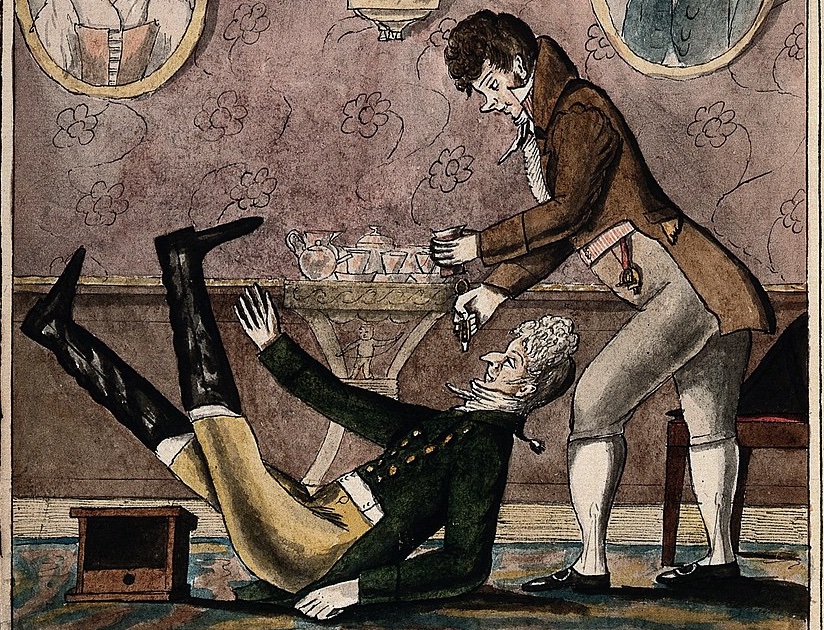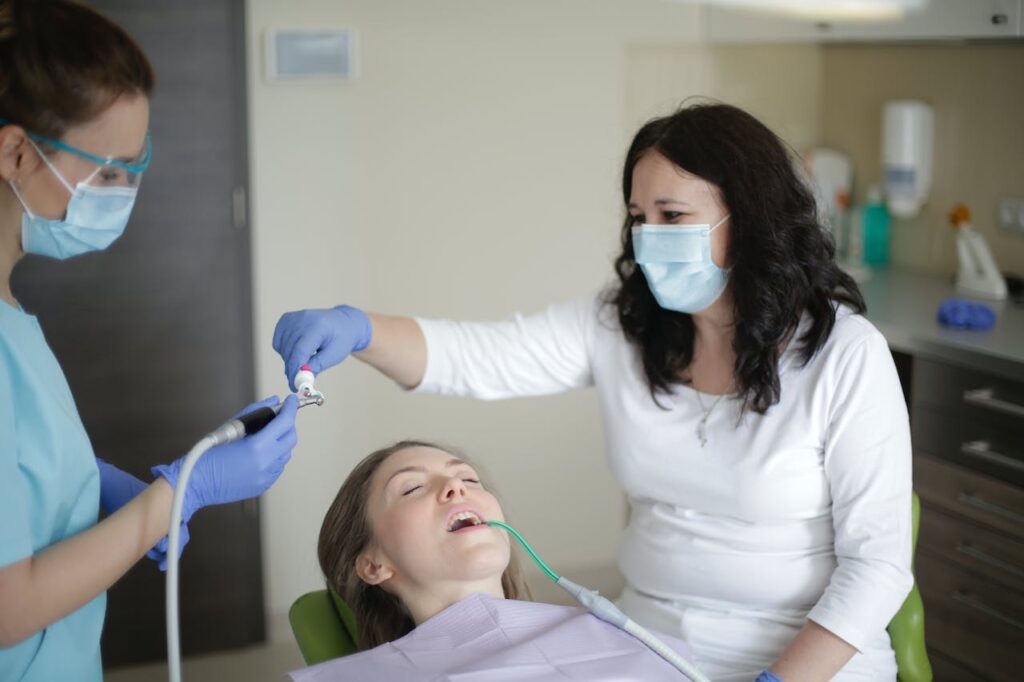Welcome to a journey through the fascinating history of dentistry! Whether you’re someone who’s curious about how dentistry evolved or you’re just looking for an interesting read, you’re in the right place. Let’s explore the incredible transformation of dental care from its ancient roots to the high-tech practices we see today.
Ancient Beginnings: The First Tooth Twinges
Believe it or not, dental practices date back thousands of years. The earliest evidence of dental work can be traced back to 7000 BC in the Indus Valley Civilization. Archaeologists have unearthed remains with traces of drilled dental cavities—imagine getting a tooth drilled without modern anesthesia!
Further, the ancient Egyptians were quite ahead of their time in dental knowledge. Around 3000 BC, Hesy-Ra, an Egyptian scribe, often dubbed the first “dentist,” had titles like “Chief of Dentists and Physicians.” Early Egyptian texts also refer to “tooth doctors,” who used a concoction of herbs and honey to fill cavities.
Transitioning to ancient Greek and Roman societies, we find that the likes of Hippocrates and Aristotle wrote about dentistry, including tooth decay and gum disease. They even attempted to treat these conditions, though their methods were rudimentary at best.
The Middle Ages: Monks, Barbers, and Pain
Fast forward to the Middle Ages, and we see a fascinating blend of progress and peculiar practices. During this period, monks were the go-to experts for medical knowledge, including dentistry. However, when the clergy were banned from performing any form of surgery by a papal decree in 1163, barbers took over many of their surgical duties.
Barber-surgeons became the new dentists, performing tooth extractions and other minor dental operations—often in public squares for a small audience. As you can imagine, their methods were not exactly gentle, and dental care during this time was synonymous with pain and dread.
The Renaissance: A New Age of Dental Discovery
The Renaissance period brought with it a renewed interest in medical sciences. In the 16th century, the French surgeon Ambroise Paré, known as the father of modern surgery, published his works, which included practical information on dental anatomy and surgery.
But the real standout of this era was Pierre Fauchard, a French physician who is often credited with being the father of modern dentistry. In 1728, he published “Le Chirurgien Dentiste” (“The Surgeon Dentist”), a comprehensive book that covered everything from oral anatomy to restorative techniques. Fauchard introduced dental fillings as a treatment for cavities and also debunked the myth that worms were the cause of dental decay.
The 18th and 19th Centuries: The Birth of Orthodontics and the Rise of Dentistry as a Profession
By the 18th and 19th centuries, dentistry began to emerge as a distinct profession. It was during this time that the term “orthodontia” was first used by French dentist Pierre Bourdet. Bourdet also perfected the dental pelican, an early extraction tool, and was known for his work in identifying wisdom teeth.
In 1840, the Baltimore College of Dental Surgery opened as the first dental college in the world. With the establishment of formal education, the field of dentistry advanced rapidly. Techniques improved, the first reclining dental chair was introduced, and the use of ether as an anesthetic in dental procedures became common practice.
This period also saw the invention of the foot-treadle drill by American dentist James B. Morrison, making the process of drilling teeth much faster and less painful.
The 20th Century: Technological Advances and Preventive Dentistry
Dentistry in the 20th century was marked by incredible technological advancements. The introduction of the electric dental drill in the early 1900s revolutionized dental procedures, allowing for more precise and less painful treatments.
Preventive dentistry also gained traction during this time. The discovery of the effects of fluoride on tooth enamel led to the widespread adoption of water fluoridation, which played a significant role in reducing tooth decay.
Dental education continued to evolve, and the requirement for dentists to be professionally licensed became the standard, ensuring a high level of care for patients.
Innovations such as the invention of the high-speed air-driven dental drill in the 1950s and the first fully-reclining dental chair significantly improved the efficiency and comfort of dental treatments.
Into the 21st Century: The Digital Revolution in Dentistry
Today, dentistry is experiencing a digital revolution. State-of-the-art technology like 3D printing, digital X-rays, and laser dentistry has transformed the patient experience. We can now benefit from faster, more accurate, and less invasive dental procedures.
Cosmetic dentistry has also become a booming field, with options like veneers, teeth whitening, and orthodontic treatments such as Invisalign becoming increasingly popular.
In recent years, the connection between dental health and overall health has become more evident, emphasizing the importance of regular dental care. The industry continues to evolve, focusing on patient-centered care, pain-free experiences, and long-lasting oral health.
The Future of Dentistry: Innovations on the Horizon
The future of dentistry holds promise for even more revolutionary changes, leveraging technology to enhance patient care and treatment outcomes. Let’s dive into what’s on the horizon for this ever-evolving field.
Minimally Invasive Techniques: Towards a Gentle Approach
The trend in dentistry is moving towards minimally invasive procedures. These techniques aim to preserve as much of the natural tooth structure as possible, leading to less pain and quicker recovery times for patients. Laser dentistry, for example, allows dentists to target treatment areas with extreme precision, reducing the need for drilling and cutting.
Digital Dentistry: Precision and Personalization
Digital dentistry is set to become even more precise and personalized. With the help of AI and machine learning, diagnostics will be more accurate, enabling customized treatment plans. Digital impressions and 3D printing will continue to refine the creation of dental prosthetics, making them more comfortable and visually appealing.
Smart Dental Devices: Empowering Patients
The rise of smart dental devices will empower patients to take control of their oral health. Smart toothbrushes that provide feedback on brushing habits and dental apps that monitor changes in oral health are just the beginning. Future devices may even be able to detect nutritional deficiencies or systemic health problems.
Teledentistry: Expanding Access to Care
Teledentistry has gained momentum, especially following global events such as the COVID-19 pandemic that necessitated remote healthcare solutions. This approach to dentistry uses telecommunication technology to provide virtual consultations, diagnosis, and even some forms of treatment, making dental care more accessible to those in remote areas or with mobility issues.
Biomaterials and Regenerative Dentistry: Healing Naturally
The field of biomaterials and regenerative dentistry is particularly exciting. Research is underway on materials that can mimic tooth enamel or promote the regeneration of dental tissues. The future may see fillings that help repair tooth decay damage or even the ability to grow new teeth in place of lost ones.
Holistic Dental Health: Beyond Teeth
Finally, the future of dentistry will likely embrace a more holistic approach to health. Understanding that oral health is intrinsically linked to overall wellness will guide preventive care and treatments. Dentists will work closely with other healthcare professionals to provide comprehensive care that addresses all aspects of a patient’s well-being.
Finishing Thoughts
The history of dentistry is a tale of relentless progress, overcoming the cringe-worthy practices of the past to offer the comfortable and effective treatments we know today. From the dawn of dentistry in ancient civilizations to the high-tech dental offices we visit now, the journey has been long but fruitful.
As we continue to push the boundaries of what’s possible in dental care, we can only imagine what the future holds. But one thing is certain: the dedication to improving dental health has been, and will always be, a hallmark of this noble profession.
Whether you’re someone who dreads the dentist or looks forward to your cleanings, understanding the history of dentistry can give you a new appreciation for the modern marvels of oral care. So next time you’re sitting in the dentist’s chair, remember the centuries of innovation that have made that moment possible. Smile because dental care has come a very long way, and our teeth are indeed grateful!



